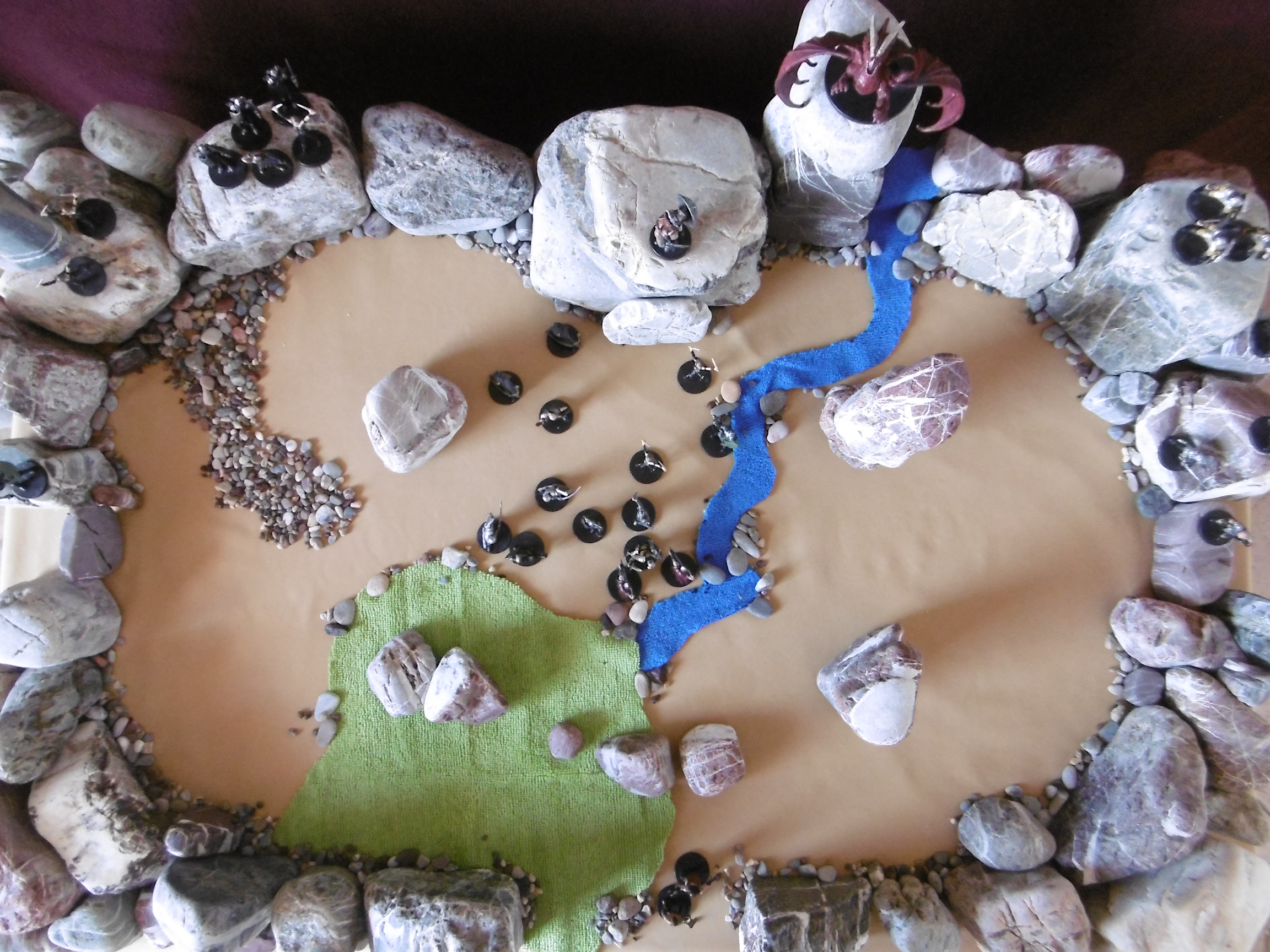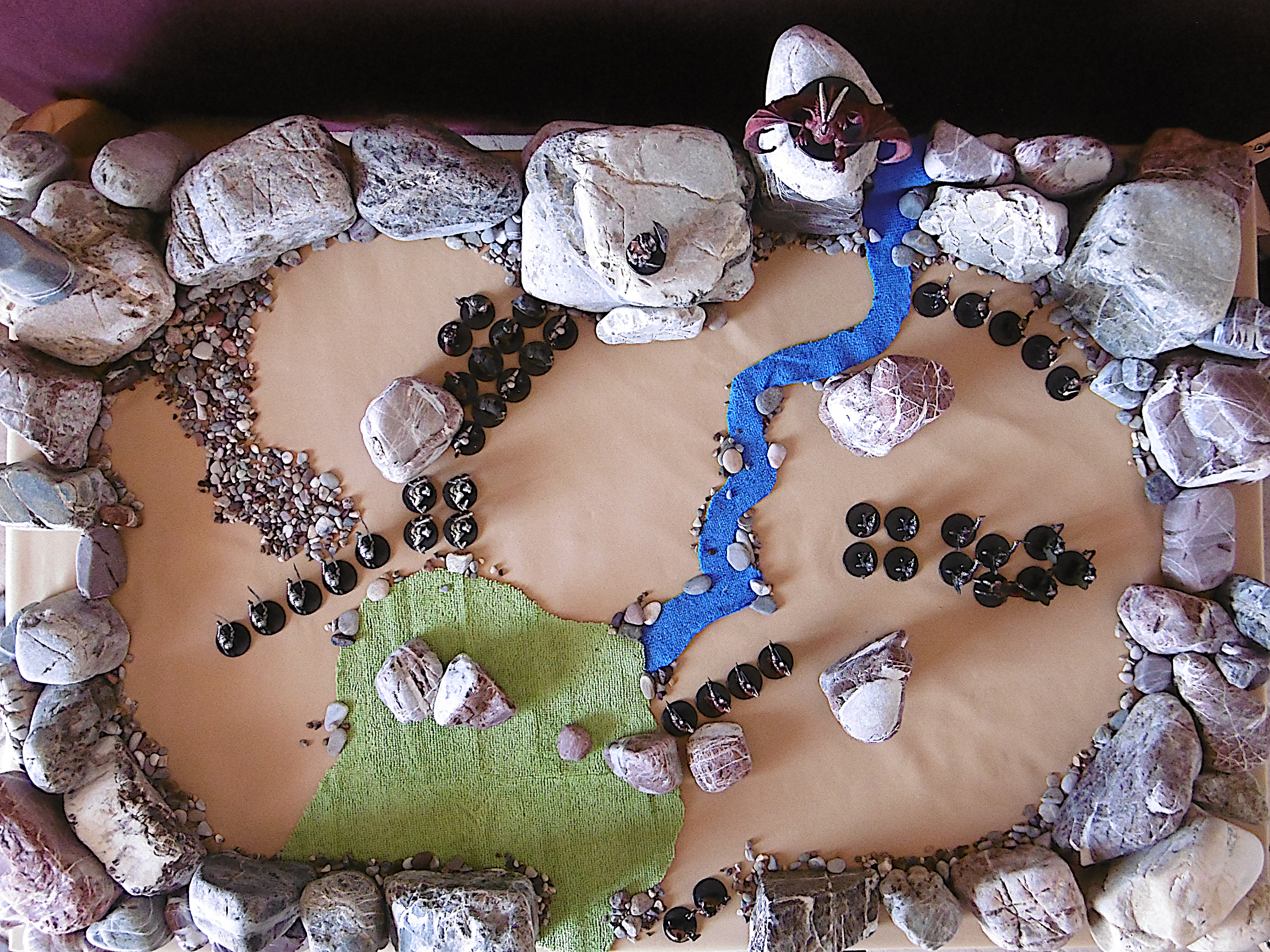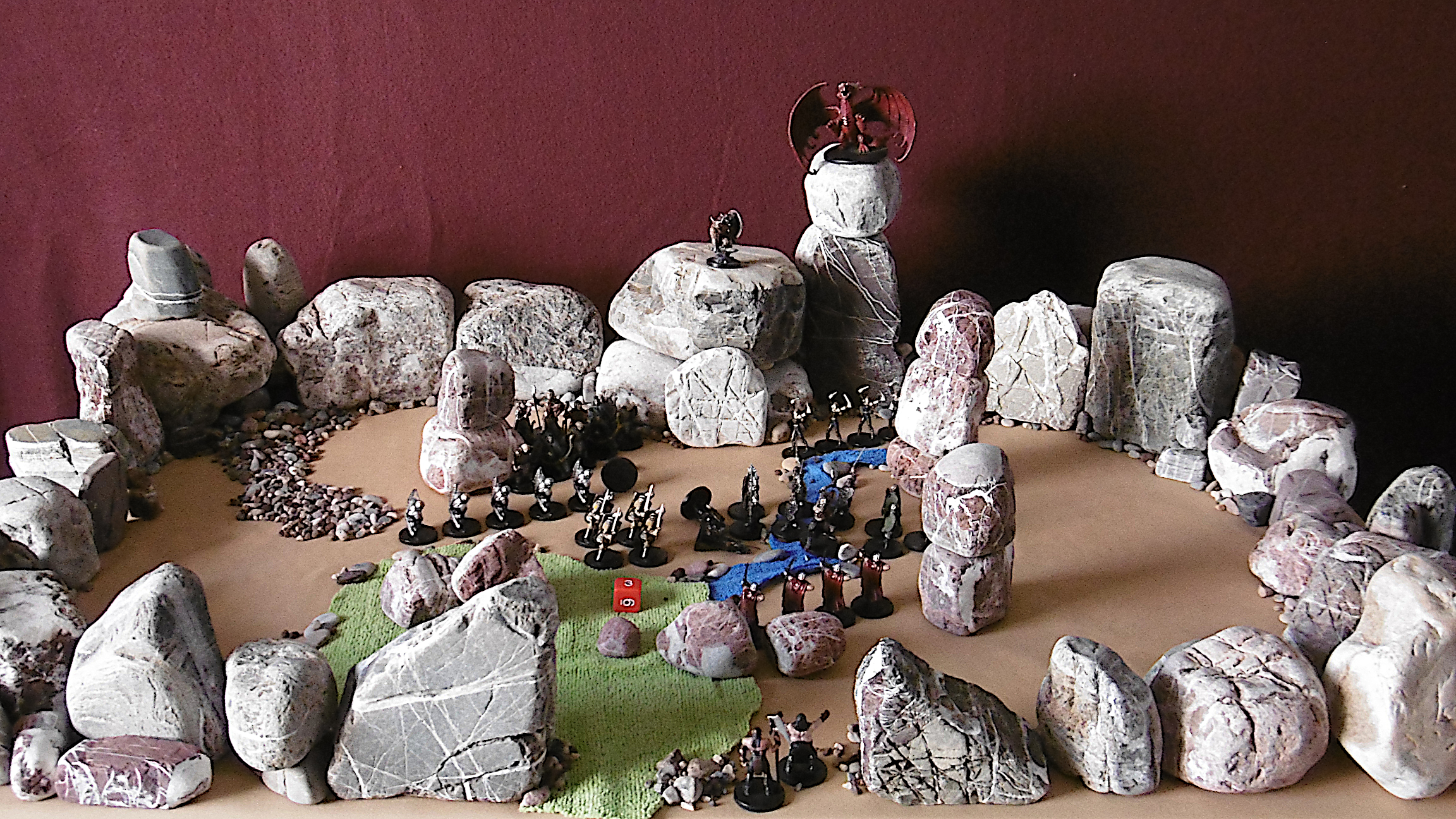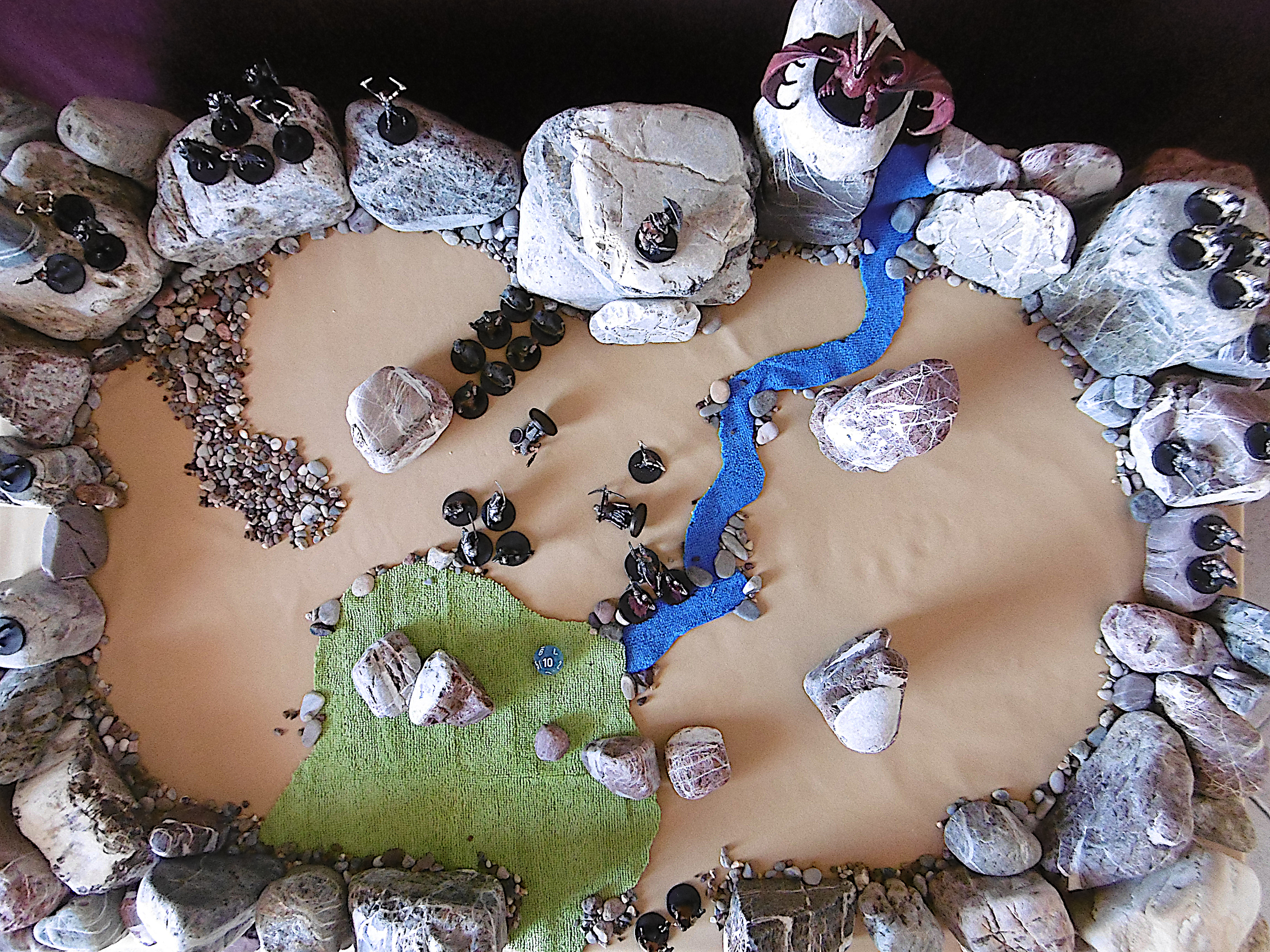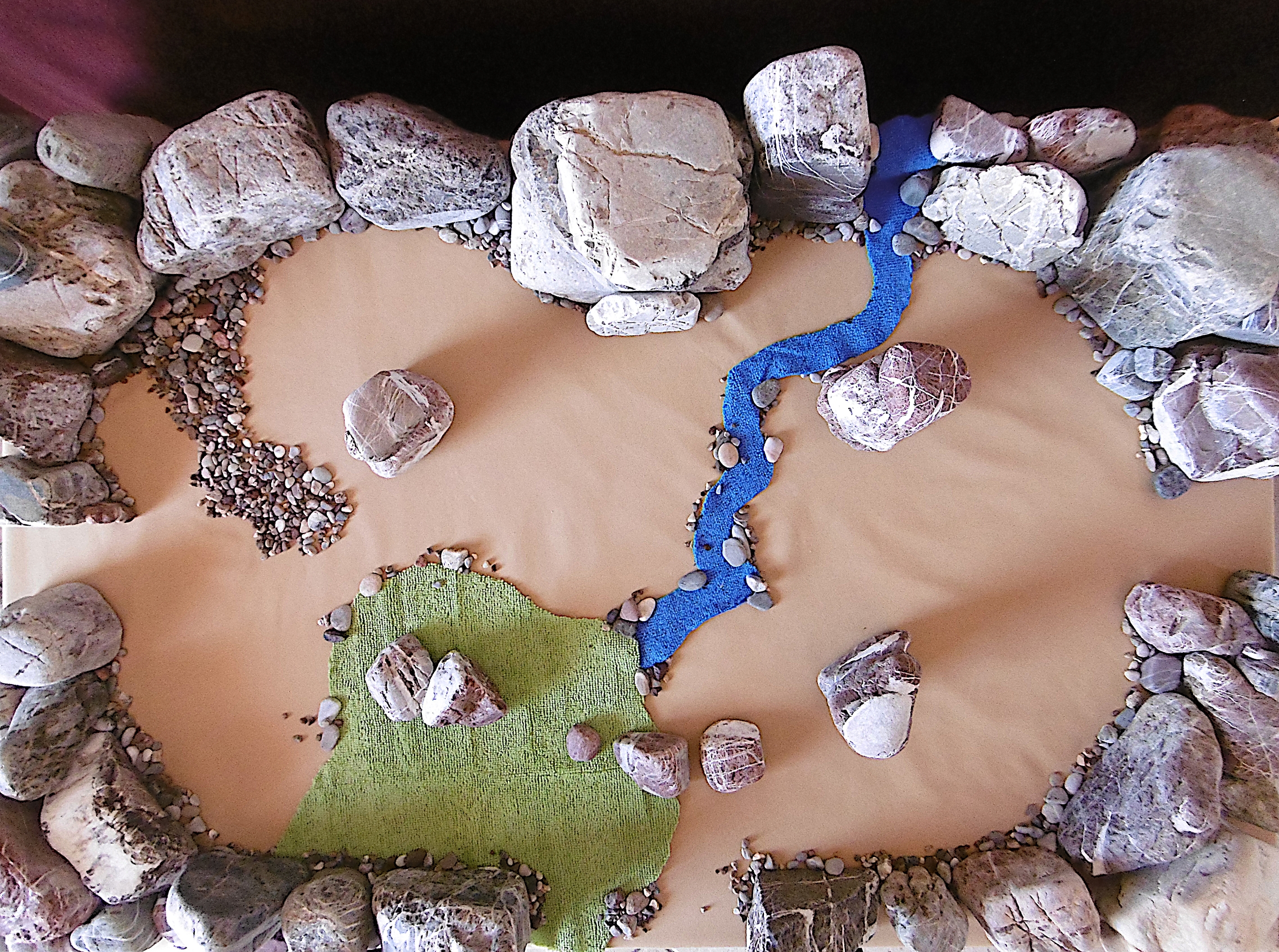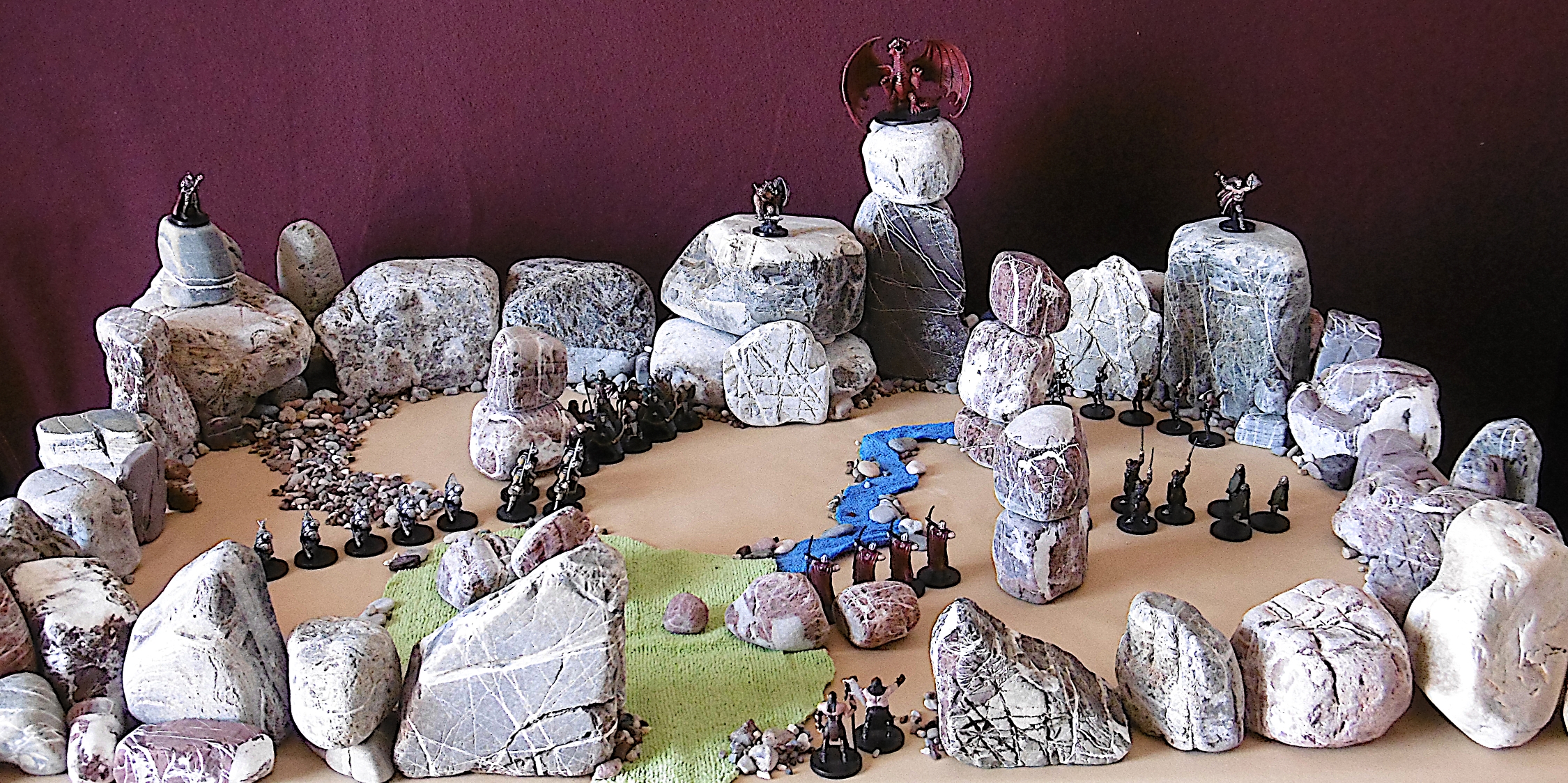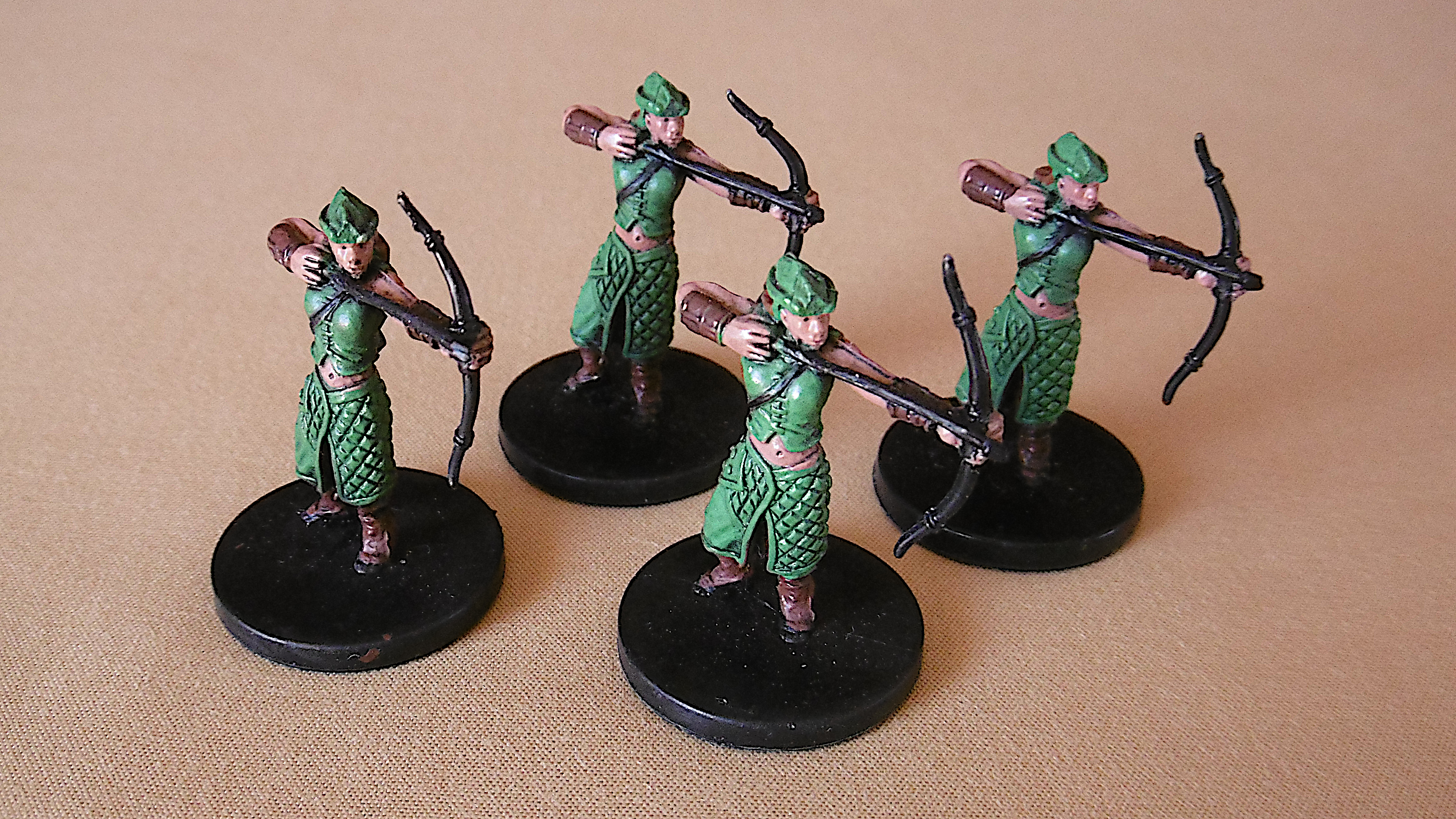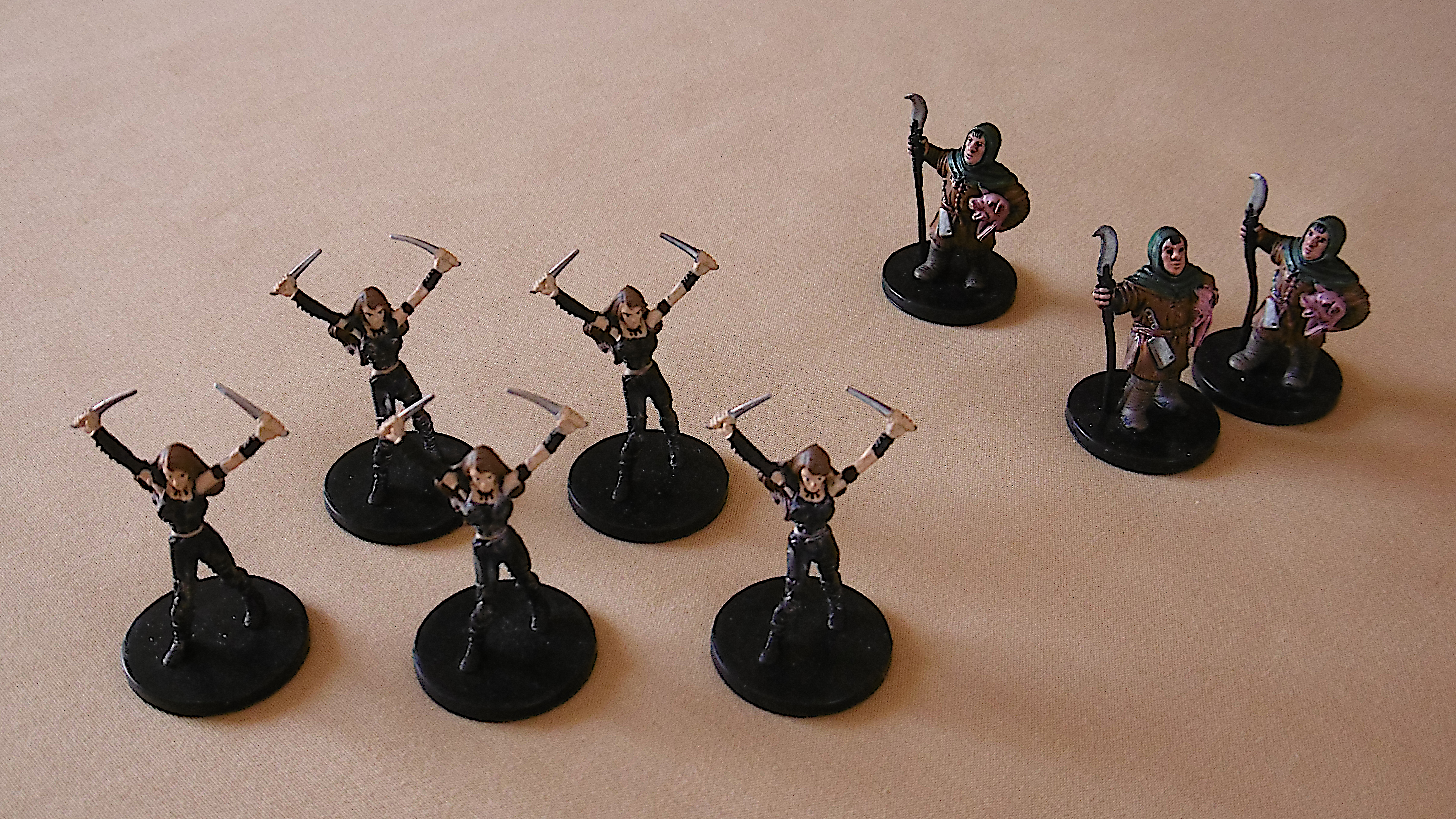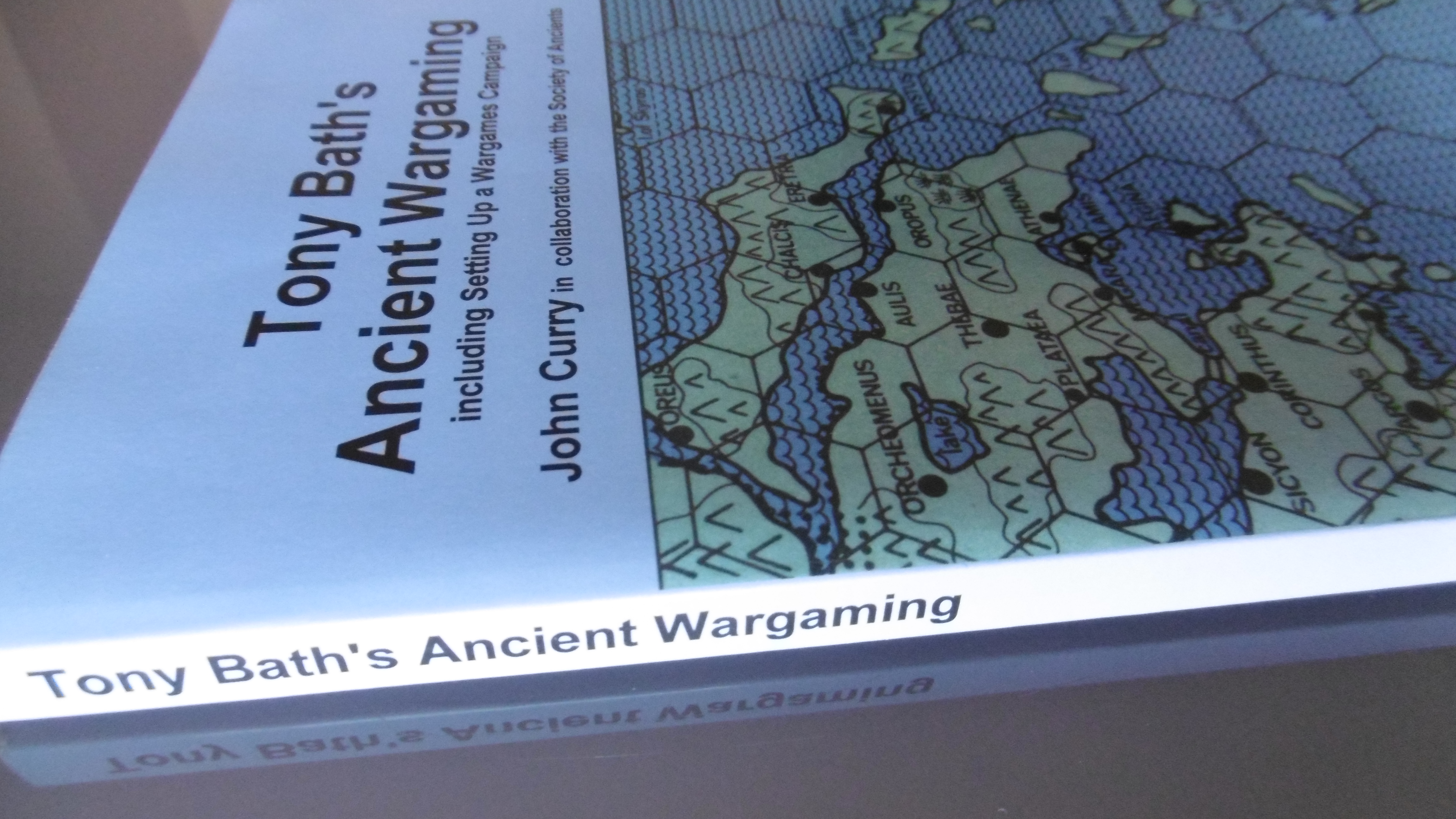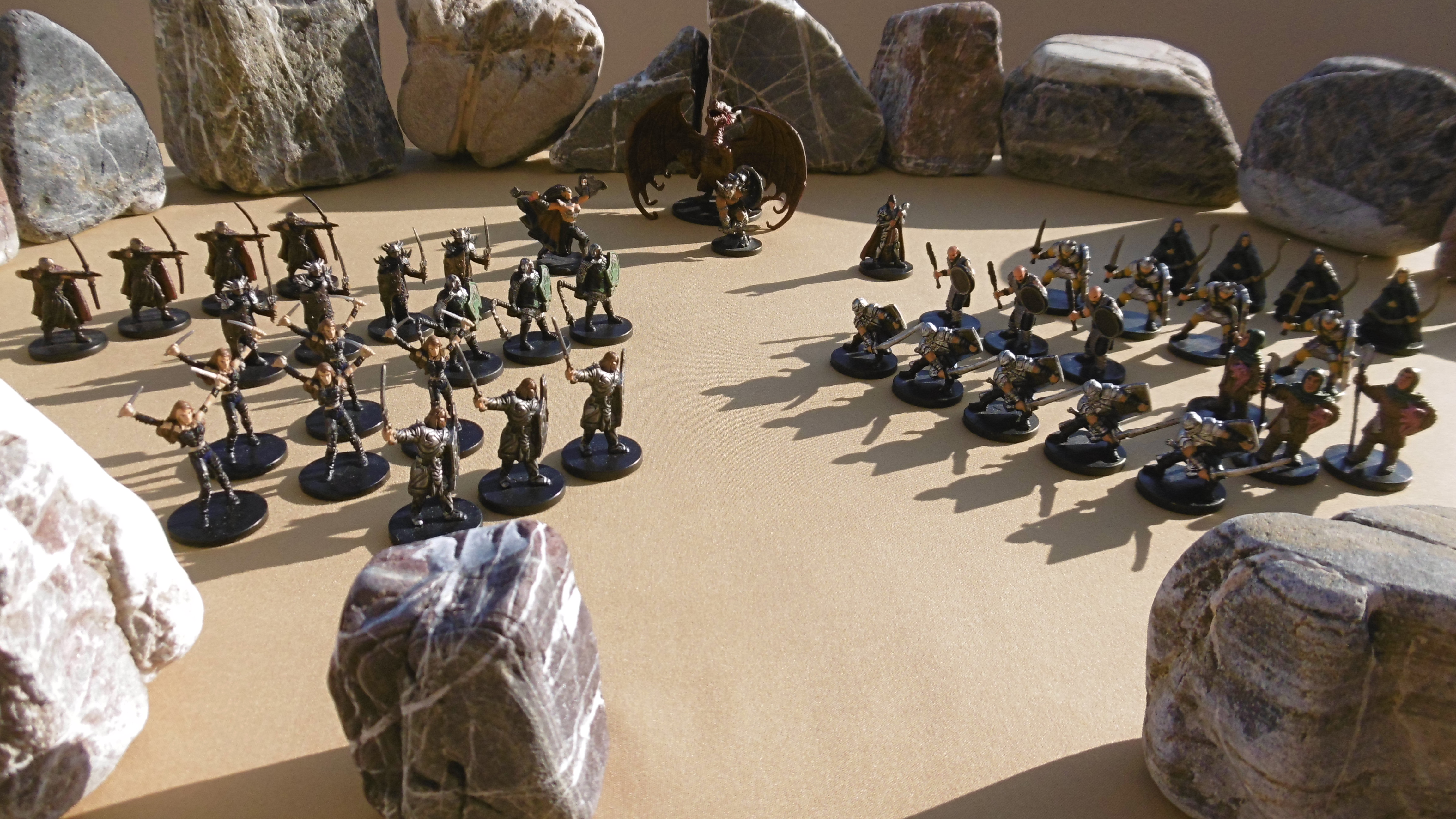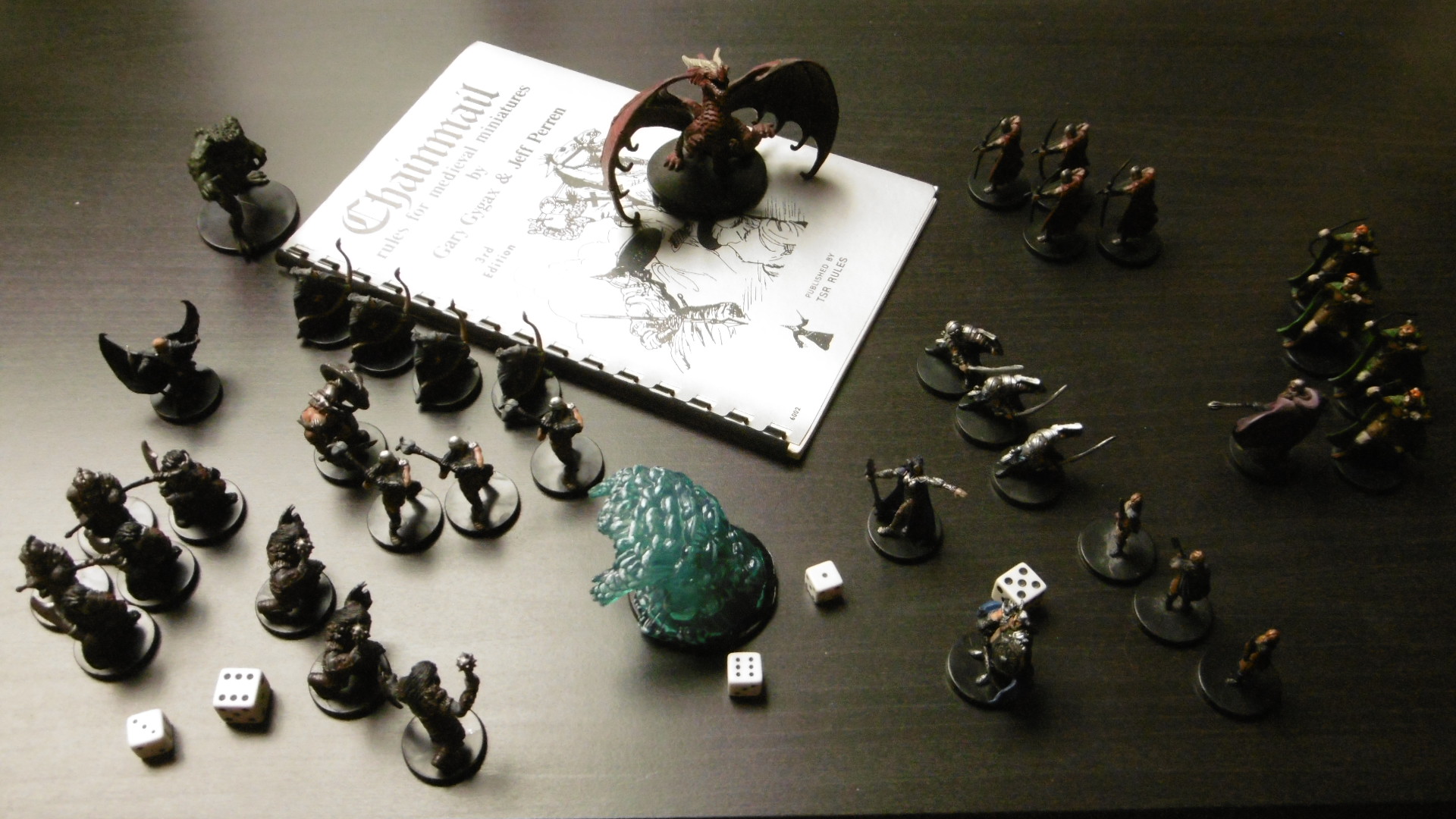Chainmail, OD&D, and the One-Minute Combat Round
I have long struggled with the one-minute combat round sometimes used in OD&D. Yes, it is easily ignored and many do. But I like at least to make sense of why a rule is as it is. If I don’t understand, whether I use it or ignore it, I’m bugged.
After a reader pointed out an oversight, I reconsidered the final conclusion made in this article, that is, that the OD&D combat round must be less than one minute in length. Please see “The One-Minute Combat Round Revisited.” Though the rule in OD&D—and by extrapolation in Chainmail—is clear, I still struggle with it, and the other conclusions and the observations made herein remain valid, so I leave this article as is.
I think I’ve sussed it. Forgive me if you’ve got this figured out before. I’m catching up. Much has been written about turns and rounds in Chainmail melee. Most of what I find on the internet discusses melee resolution in mass combat.1 I wasn’t able to wade through it all. Please do point me to other arguments or make your own in the comments below.
Mass Combat vs. Man-to-Man
I’m talking here about the combat round in Chainmail’s Man-to-Man Combat system, which is inherited by OD&D. On the subject of melee resolution in mass combat, the rules are, whether by design or lack of it, perfectly ambiguous. One could argue either way, citing, in many cases, the same passage from the text.
To decide, I defer to the definition of Melee Resolution (15). According to my reading, melee “rounds” occur at step 6 in the turn sequence. Each side engaged in melee throws one or more dice a single time to determine hits, casualties are removed, and post-melee morale is tested. If both sides stand the morale test, they are still engaged in melee. But, unless in the middle of a charge, we go on to the next melee on the field, where we repeat the process: dice, casualties, morale, until all melees have had a round. Then, we go back to step 1 in the turn sequence to let other figures on the field get a turn before we continue melee(s) at step 6 in the next turn.
In Chainmail, Gygax and Perren give us the one-minute turn for miniatures combat (hereafter, mass combat2). They also give us the man-to-man combat rules, to which “all the [mass combat] rules apply, except where amended below” (25). Later, in D&D (1974), Gygax and Arneson describe Fighting Capability as “a key to use in conjunction with the Chainmail fantasy rules,3 as modified in various places herein” (Men & Magic, 18).
Mass combat and man-to-man melee must take place at different time scales.
Modern interpretation of this combination of rules yields the one-minute combat round for OD&D. [See also “The One-Minute Combat Round Revisited.”] After a few more man-to-man combat rounds this morning, it occurs to me that mass combat and man-to-man melee must take place at different time scales. That is, in a one-minute turn, all units engaged in mass combat roll the dice once against opponents, while figures engaged in man-to-man melee may roll more than once, exchanging a series of blows, until the outcome is decided—in the same one-minute turn.
I outline the argument below. I hope it is more coherent than its subject matter.
Diverse Sources
Even the casual Chainmail reader is not surprised to learn that the published rules are not a cohesive system for mass combat and individual melees with magic and monsters, integrated like the systems on board an M1 Abrams main battle tank. Chainmail is a number of rules subsets, cobbled together from different sources, more akin to a field-expedient shoe repair job.4 Historian Jon Peterson finds antecedents for the three major subsets, which correspond to the major divisions in Chainmail’s contents table.5
- RULES FOR MEDIEVAL MINIATURES—Rules for Medieval Wargames, Tony Bath, 1966.
- MAN-TO-MAN COMBAT—Contribution to Wargamer’s Newsletter #51, Phil Barker, 1966.
- FANTASY SUPPLEMENT—Rules for the New England Wargamers Association, Leonard Patt, 1970.
Note that Chainmail does not take the earlier systems whole cloth. Peterson uses words like “derivative,” “borrows,” and “prefigures” to describe the relationships. Of the subsystems, Peterson writes, “each derived from different influences in the creative commons of miniature wargaming, and although Gygax adapted and anthologized them, little effort was made to reconcile or interwork them.”6
It is this lack of reconciliation that sows confusion. That each subset comes from a different source opens the door on the possibility that the time scales differ in mass combat and man-to-man melee.
Turn Sequence and Man-to-Man
Before I go further, it must be understood that the Turn Sequence is used in the Man-to-Man system. If you’re a believer, please skip down to the next heading. If not, let me convince you.
The Turn Sequence, whether move and counter-move or simultaneous movement, stipulates steps for each turn. The sequence is, of course, given in the mass combat section. But those rules apply to the man-to-man rules “except where amended” (25), and, in this regard, they are not.
The best evidence for this is in the “first blow” section (25), which introduces the notions of “attacker” and “defender” without specifying how the designations are determined. It’s implicit—use the Turn Sequence: “1. Both opponents roll a die [for initiative].” Unless the opponent with the high roll opts for the counter-move or wants to parley, he or she is the attacker. The other, the defender.
Melee Resolution
So, if we agree that the Turn Sequence is intended to be used with Man-to-Man Combat, then, after initiative, the opponents move, take artillery and missile fire, and at step 6: “Melees are resolved.”
Here is where the confusion between the two disparate systems comes into play. In the mass combat section, Melee Resolution is described:
“After both players have rolled the number of dice allotted to them for their meleeing troops by the Combat Tables, casualties are removed, and morale for both opponents is checked” (15).
As this is not explicitly amended in the Man-to-Man section, we expect each figure to roll once on the Man-to-Man Melee Table and, if neither hits, we wait for step 6 to come around again.
Under that assumption though, the “first blow” section cited above doesn’t make sense. For it goes on to give conditions to determine who gets the first blow on the first and subsequent rounds of melee. If each side gets only one blow per one-minute round, there would be no “2nd round and thereafter” (25), because each side would roll for initiative, which determines the attacker, at the beginning of the turn.
During the melee resolution step, each unit engaged in mass combat melee gets one throw of the dice,7 while, during the same step, figures in man-to-man melee throw dice until the outcome is decided.
Granularity
Two sides in a mass melee roll attack dice and assess damage simultaneously. High above the battlefield, where one figure represents 20 troops, we don’t see who gets the first blow and who gets the second—nor do we want to. The system simulates tens or hundreds of troops attacking and defending during one minute.
At a 1:1 figure scale, we don’t see the entire field. Hovering just overhead, we see a few individuals close up. The action is more granular. We take it as read, for example, that missile fire in mass combat considers only maximum range, whereas Man-to-Man amends missile fire to give a single archer a better chance to hit targets at short and medium ranges.
Below I enumerate some amendments to the mass combat system that imply, when fighting man-to-man, a combat round of less than one minute. There are others. These are both the most salient and the least ambiguous.
1. Rear and Flank Attacks.
“Men attacked from the rear do not return a blow on the 1st round of melee and automatically receive 2nd blow position on the 2nd round of melee. Men attacked from the left flank automatically receive 2nd blow position on the 1st round of melee” (25).
In mass combat we see attacks from the rear and flanks, but there is no second round. The action is carried to the next turn. In man-to-man, we can see the combatant turning to strike the attacker. In the case of a rear attack, he has to dodge another blow before he can reposte. If he is attacked from the flank, we see that he is right-handed.
2 Parry.
“For any weapon 1 class higher to three classes lower than the attacker the defender may parry the blow…” (25).
Above we saw in which hand he held the weapon, now we can compare its size with his opponent’s weapon. Further, at the 1:1 scale, we see the defender parry an attack. In reality, a parry happens in an instant. It’s so fast, a casual observer might not see it. Movie actors have to exaggerate the gesture to show us a parry on film.
3. Horse vs. Foot.
“When fighting men afoot, mounted men add +1 to their dice for melees and the men afoot must subtract -1… Men may be unhorsed by footmen if they specifically state this is their intent before dice are rolled” (26).
At man-to-man scale, mounted men attack with a weapon class versus an armor class, as do footmen. The difference in their disposition is accounted for by adjustments to their dice rolls. Moreover, any unhorsing is assumed in the mass melee combat tables. At 1:1, we have to state the intention and hope for success.
Conclusion
How much time does it take to turn around? How long to parry a blow or take a swing at a rider? I’m not arguing to set a number of seconds for the man-to-man combat round. My point is that the period is not stipulated and that it must be less time than the one-minute turn.
In Chainmail’s Man-to-Man Combat, a round of melee is like a round of drinks: We don’t know how much time it takes. We only hope to be upright at the end of it.
I conclude that Gygax and Perren do not intend the one-minute round for Man-to-Man Combat. Rather, the entire man-to-man melee is assumed to be resolved in the one-minute turn. The length of the man-to-man round is not specified in Chainmail nor, subsequently, in OD&D.8, 9
Notes
1 For further discussion on the topic of melee resolution in mass combat, see “Melee Rounds per Turn in Chainmail,” on the “Original D&D Discussion” forum.
2 It is rare if ever that we see the term “mass combat” in early wargames rules. When they refer to combat or melee, they speak of clashes between companies, regiments, and brigades. Individual engagements are the exception. Hence the terms “man-to-man” and “individual” melee, which are today disused.
3 I ignore the particular reference to the fantasy rules and assume Fighting Capability is interpreted within the frame of the entire ruleset.
4 It does not escape notice that, around the time Chainmail was being developed, Gygax supported a family of five as a shoe cobbler.
5 Links to Peterson’s articles about subset antecedents on his “Playing at the World” blog. Beware the rabbit hole.
- The LGTSA Medieval Miniatures Rules
- To-Hit Rolls in Individual Medieval Combat, from Phil Barker to Chainmail
- A Precursor to the Chainmail Fantasy Supplement
6 To-Hit Rolls in Individual Medieval Combat, from Phil Barker to Chainmail
7 A caveat concerning mass combat melee: Each unit gets one throw of the dice unless, as in the case of the example (15-16), a charge is not halted in the first throw of the dice and the charging unit meets an enemy unit by the end of the charge move. In that case, the charging unit and its opponent get another throw in the same turn. A similar scenario can occur when missile troops refuse combat (15).
In the case, however, where the result of post-melee morale is “melee continues,” I read “melee continues [the next turn].” This, based chiefly on the text of Melee Resolution (15, cited above).
8 Though he stipulates a 10-second combat round, Moldvay reproduces Chainmail’s man-to-man system in a more coherent manner. The significant changes in B/X (1981) are two:
- The side with initiative goes through all the steps of the turn sequence before the other.
- All actions—melee as well as movement, spells (artillery), and missile fire—take place within the 10-second round.
9 We don’t forget that Gygax instituted the one-minute combat round in Advanced D&D (Dungeon Master’s Guide, 1979). There, the author stated clearly his intention:
“Combat is divided into 1 minute period melee rounds, or simply rounds, in order to have reasonably manageable combat. ‘Manageable’ applies both to the actions of the combatants and to the actual refereeing of such melees. It would be no great task to devise an elaborate set of rules for highly complex individual combats with rounds of but a few seconds length. It is not in the best interests of an adventure game, however, to delve too deeply into cut and thrust, parry and riposte (61).”
If our own intention is to the contrary—that is, to delve, however deep, “into cut and thrust, parry and riposte,” which is the stuff of fantasy adventure combat since the 1980s, then the argument for “rounds of but a few seconds length” is persuasive.
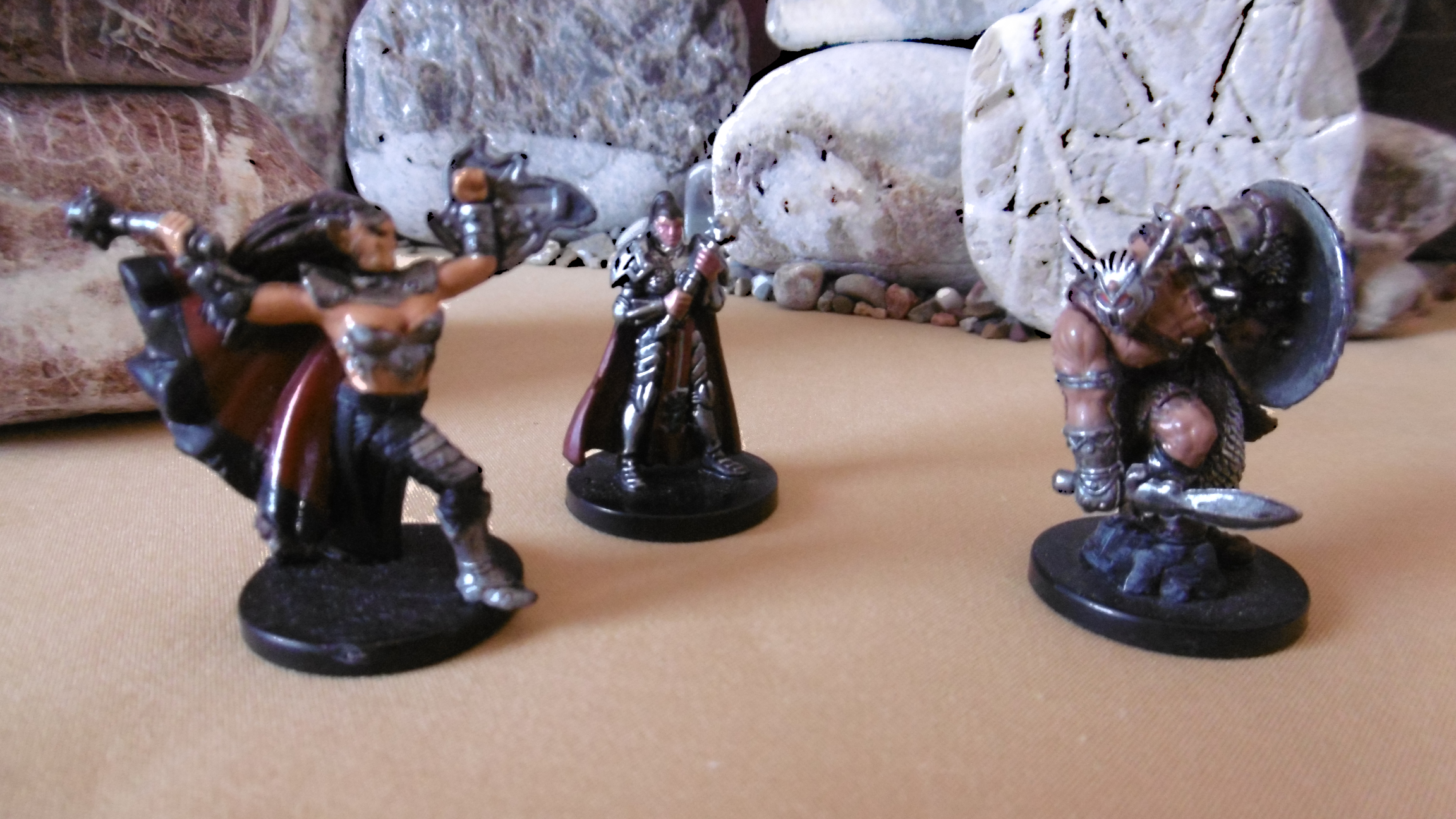
“Two against one, c’mon…”
